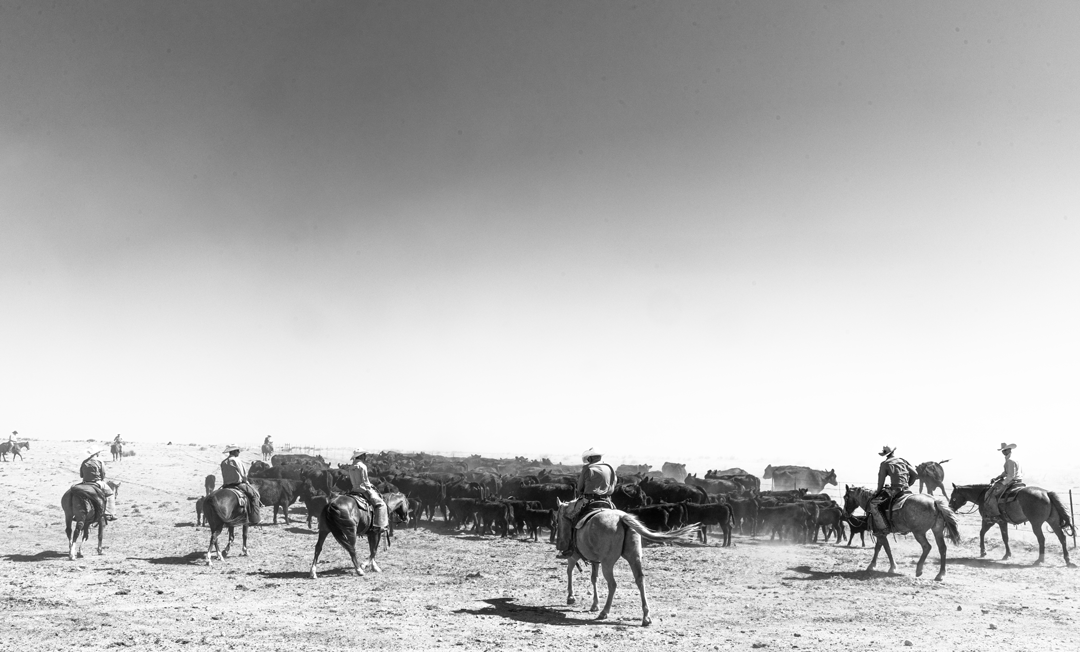*Photo by Emerson Miller
When I hear the term “gut-joint axis,” here’s where my brain goes:
If my stomach is upset, I am distracted and clumsy. Exercising with a compromised GI tract feels like pushing a car uphill in flip flops; Everything takes more effort, and I am far more likely to tweak something, trip, or injure myself.
It’s easy to imagine that our horses experience the same things when dealing with digestive distress.
But what if I told you that research is beginning to show that it is not just common sense, it’s biology? Studies now show that the gut microbiome, that giant population of bacteria, yeast, and fungi living inside your horse’s digestive tract, actually influences inflammation in the joints, and communicates directly with the mitochondria (the body’s cellular power plants) to help protect against oxidative stress and tissue degradation.
This is a big deal because joint-related issues are the number one reason that performance horses lose training days. When a 1,000 pound athlete comes up lame or jogs with a bobbing head, it can derail an entire season, not to mention be incredibly upsetting and difficult to manage.
So, let’s dive into the science of how gut health connects to joint health, and what you can do to help your horse move comfortably, recover quickly, and perform at their best for the long haul.
What is the Gut-Joint Axis in Horses?
The gut-joint axis refers to the interconnected relationship between the gut microbiome and joint health, linked through immune, metabolic, and inflammatory pathways.
Here’s how it works:
-
During healthy digestion, forage travels to the horse’s hindgut, where microbes ferment it, and produce volatile fatty acids (VFAs), such as butyrate and propionate, as by-products.
-
These VFAs help regulate inflammation, strengthen the gut barrier, and support immune balance.
-
However, if the hindgut microbiome becomes imbalanced due to stress, antibiotic therapy, diet changes, illness, etc., digestion is disrupted. The gut can become “leaky,” allowing toxins to enter the bloodstream, and increasing systemic inflammation, which can negatively affect joint tissues and delay recovery after exercise.
In humans, research links gut dysbiosis to “inflammaging” and the progression of osteoarthritis. In horses, we see similar mechanisms: When the gut microbiome is balanced, VFAs act as natural anti-inflammatories, supporting connective tissue health and cartilage metabolism. But, when dysbiosis occurs, inflammatory cytokines (mediators) increase, weaken joint structures, and contribute to joint pain and stiffness.
This explains why horses with gut upset often also show overall joint discomfort. They share inflammatory roots.
Exercise and nutrition play pivotal roles too. Moderate, consistent movement and fiber-rich feeding promote microbial balance and diversity, while overtraining, high-starch rations, and abrupt feed changes, can push the gut-joint axis toward inflammation.
Prebiotics, Probiotics, and Postbiotics: The 3 “P’s” of Gut (and Joint) Support
Prebiotics are non-digestible fibers that serve as food for beneficial microbes living in the gut. They pass through the horse’s digestive tract untouched, until they reach the hindgut, where they are fermented by bacteria. This produces VFAs that nourish gut cells, reduce inflammation, and strengthen immune function.
Probiotics are live, beneficial microorganisms that replenish and stabilize the horse’s gut microbiome. They help repopulate good bacteria depleted by stress, antibiotics, or dietary changes. Horses with osteoarthritis have been shown to have lower microbial diversity, and those differences correlate with changes in joint tissue gene expression and elevated pro-inflammatory cytokines, both systemically and in the joint synovial fluid. This makes a strong case for consistent probiotic support — especially for performance horses.
Postbiotics are the beneficial by-products created when microbes ferment prebiotics. VFAs are technically postbiotics! One fascinating study showed that postbiotics can improve mitochondrial health in cartilage cells by enhancing cellular energy and clearing out damaged mitochondria, supporting the idea that communication between mitochondria and microbes helps preserve joint structure and function.
Together, the 3 Ps form a feedback loop:
Prebiotics feed probiotics → Probiotics produce postbiotics → Postbiotics reduce inflammation and support tissue repair.
Connecting the Gut-Mitochondria Axis to Joint Health
A 2021 study tracking 20 elite endurance horses before and after competition discovered something extraordinary: Endurance exercise triggered changes in the expression of approximately 800 mitochondrial-related genes involved in energy metabolism, oxidative stress and inflammation.
In addition, beneficial butyrate-producing bacteria were closely tied to healthier mitochondrial activity, meaning that the gut and mitochondria were dynamically communicating during exercise.
This matters for joint health because it means that mitochondria not only power muscles, they also regulate oxidative stress and inflammatory responses throughout the body. When microbial metabolites such as VFAs help keep mitochondria balanced, systemic inflammation drops, helping to protect cartilage, synovium, and joint tissues from ‘wear and tear’ that drives joint degradation over time.
In short, a healthy equine gut microbiome may indirectly safeguard the joints by modulating mitochondrial function and keeping inflammatory and oxidative processes in check. Supporting microbial diversity and VFA production could therefore become a new frontier for promoting both gut and joint longevity in performance horses.
How to Support the Gut–Joint Axis Naturally
The gut-joint connection offers a revolutionary way to think about equine soundness. Instead of treating joint issues only at the site of pain, we can also support the system upstream - the gut - where inflammation often begins.
Here are 5 practical steps for you to take:
-
Keep Fermentation Top of Mind: Keep forage front and center of the horse’s diet. Many of us have heard this advice before, but it is usually in relation to behavior or gastric ulcer prevention. Now you also know that forage is what increases fermentation. One more gold star for hay and pasture!
-
Feed Starch Wisely: Performance horses often require higher-starch diets. This is completely understandable, but does require intentional management. Feed starch and sugars wisely in only the amounts the horse requires, use alternative high-energy sources such as fat when possible, and always make feed changes gradually over 10-14 days.
-
Support With Science-Backed Supplements: Choose clinically-based formulations with prebiotics, probiotics, and postbiotics to support microbial diversity and VFA production. This is especially crucial for performance horses under high stress levels.
-
Train Consistently: Moderate, steady exercise helps maintain microbial balance and metabolic resilience. Overtraining, or ‘too-much-too-fast’ can increase inflammation. Pace your training, and always provide time for the horse to recover.
-
Hydrate and Manage Stress: Travel, heat, and competition can shift gut microbes. Be proactive and counter with targeted support and proper hydration.
Gut health is joint health. By nurturing your horse’s internal ecosystem, the all-important microbiome, you’re also supporting stronger joints, faster recovery, and athletic longevity. The next time you reach for a joint supplement, remember: soundness starts in the gut.
Supplement Spotlight: Support the Gut-Joint Axis
At 6666 Equine Supplements, we believe that true performance starts from the inside out. For performance horses, here’s what we suggest:
The Complete Gut Protection formula combines prebiotics, probiotics, and postbiotics to maintain microbial balance and healthy hindgut fermentation, the foundation for a strong immune and inflammatory response.

Pair it with Joint Health Pellets, which provide proven levels of hyaluronic acid, glucosamine, chondroitin sulfate, cetyl-M, Boswellia serrata, and postbiotics to nourish cartilage, protect connective tissue, and help reduce inflammation.

Together, these two supplements deliver complete support across the gut-joint axis - fueling resilience, enhancing recovery, and protecting long-term athletic soundness.


